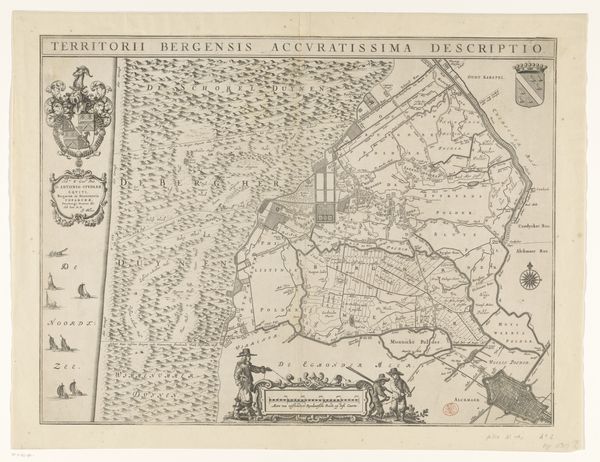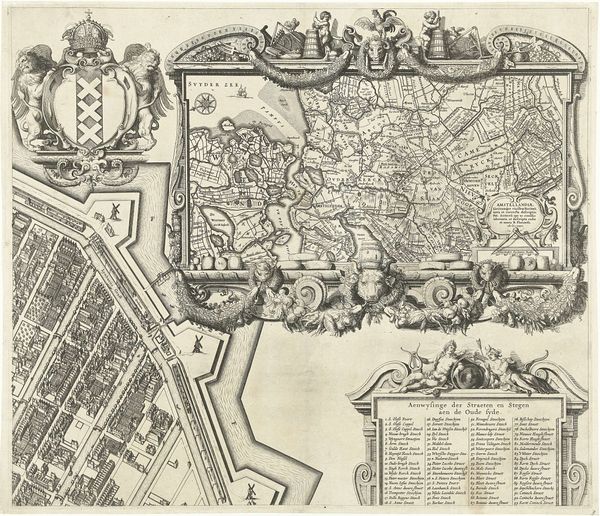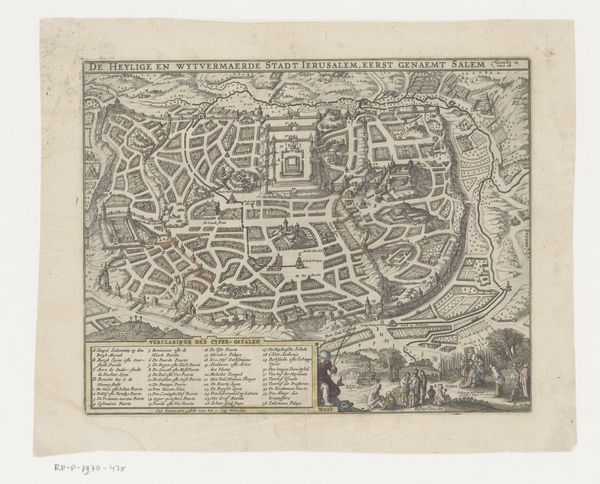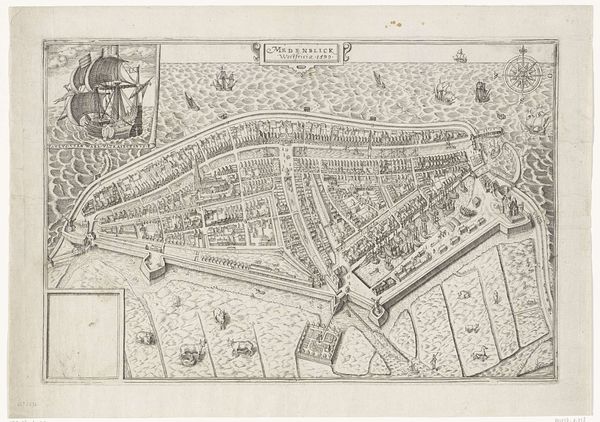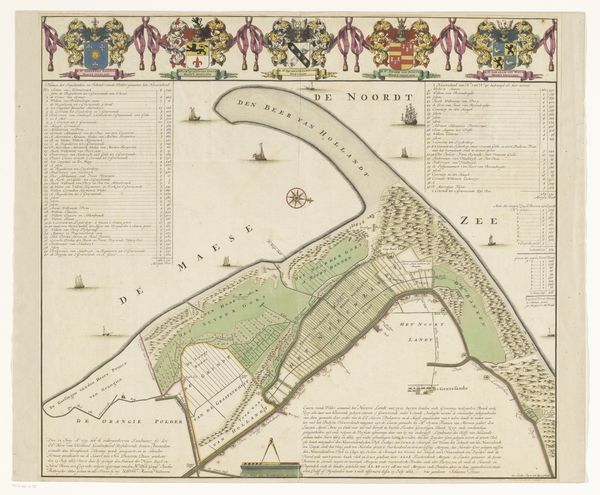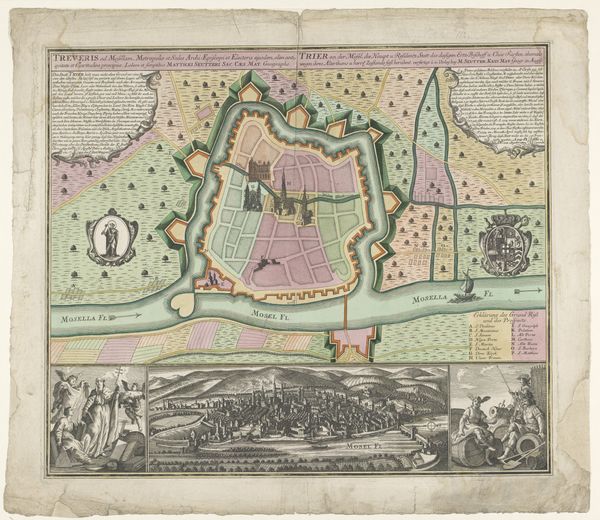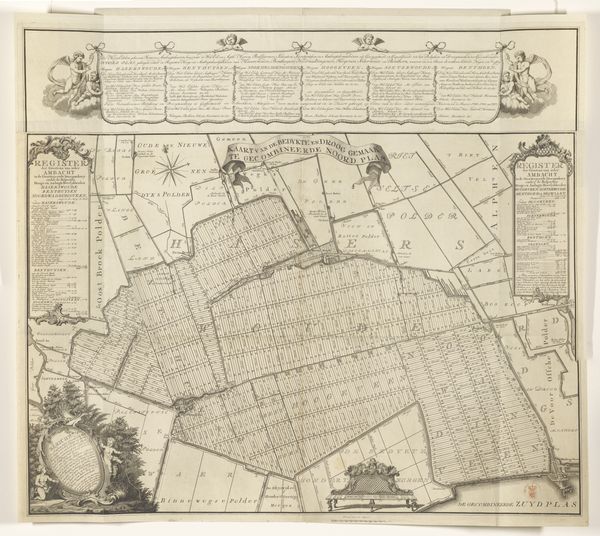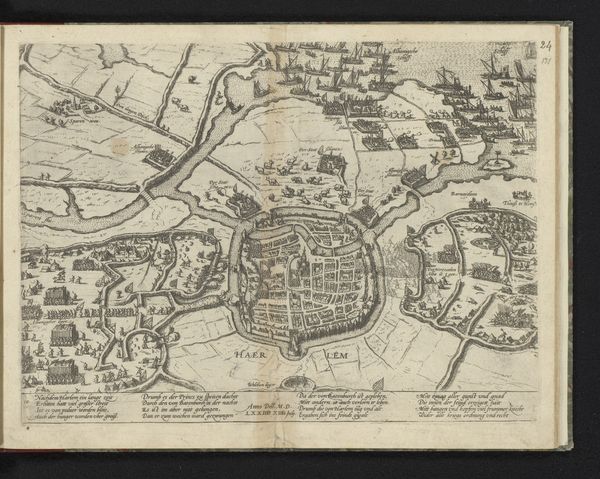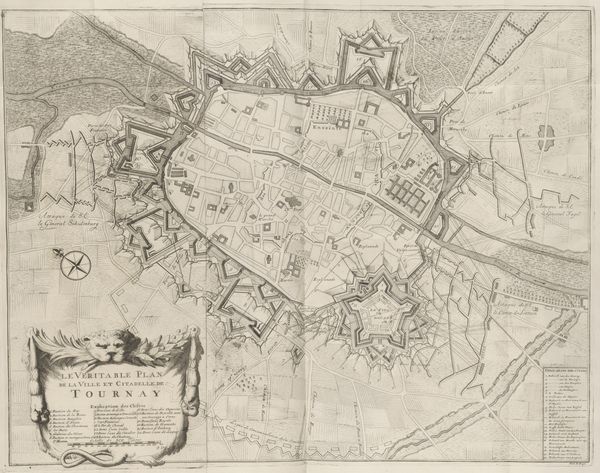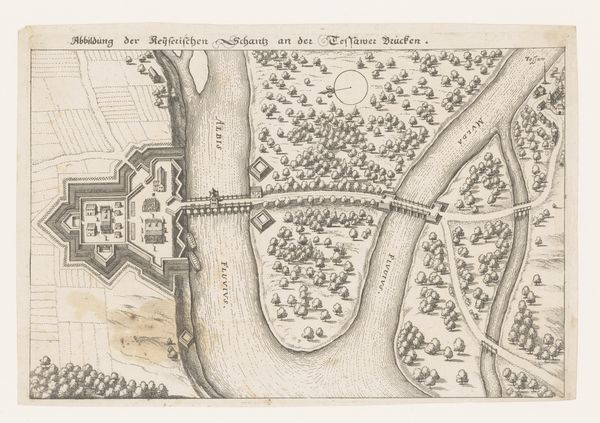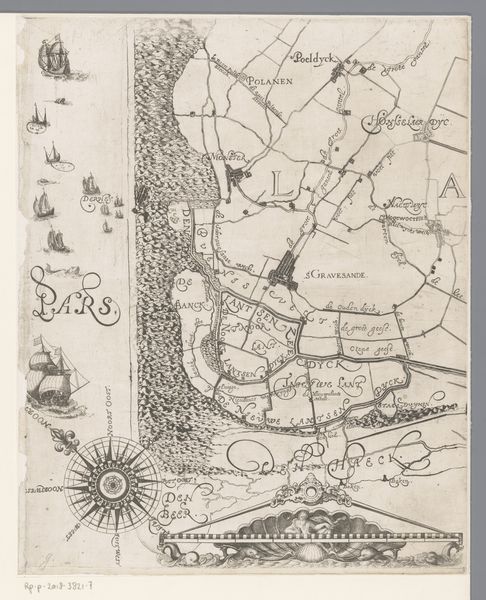
drawing, print, engraving
#
drawing
#
dutch-golden-age
# print
#
landscape
#
engraving
Dimensions: height 514 mm, width 591 mm
Copyright: Rijks Museum: Open Domain
Curator: Let's take a look at "Kaart van het Hoogheemraadschap van Delfland (eerste deel)," a map originating from the early 18th century, specifically between 1712 and 1735. Its creation is attributed to Luggert van Anse, executed as an engraving or print. Editor: It's stark, isn't it? Very detailed. Almost unsettling in its precision, like peering into a perfectly ordered, but potentially fragile, world. The textures created by the engraving give it a tactile quality despite its flat, cartographic nature. Curator: Indeed. The crisp lines and calculated depiction embody the Dutch Golden Age's ambition to categorize and manage their landscape. You'll notice how the cartography meticulously records every polder and waterway under the Delfland water board's authority, really highlighting human interventions. Editor: The symbolic crest on the left certainly asserts authority. Those heraldic flourishes and curious symbols are bold, even aggressive in their formality. How much is this about power, and how much is genuine surveying? Curator: It’s inseparable, really. Map-making then was intertwined with civic authority. The detailed rendering, combined with that heraldry, projects an image of control. Mapping the land became a method to literally embody Dutch governance of these areas, displaying technological prowess. Editor: Looking at it this way shifts my perspective. It's no longer just a depiction; it’s an instrument of governance, making an explicit claim. That almost sterile neatness isn't purely aesthetic then; it supports that visual message of calculated management. Curator: Exactly. Think about its place on the wall, perhaps in a council chamber: this map not only communicates geographical data, but actively performs a particular visual representation of ordered civic structure, asserting that governance. Editor: Well, I initially found it severe. I see now it's meant to project Dutch ambition on paper. Viewing its role moves us past the inherent details of lines and shading. Fascinating how art becomes a functional device. Curator: And hopefully, by noticing the artwork's purpose, we start to observe beyond the beautiful drawing in front of us.
Comments
No comments
Be the first to comment and join the conversation on the ultimate creative platform.

